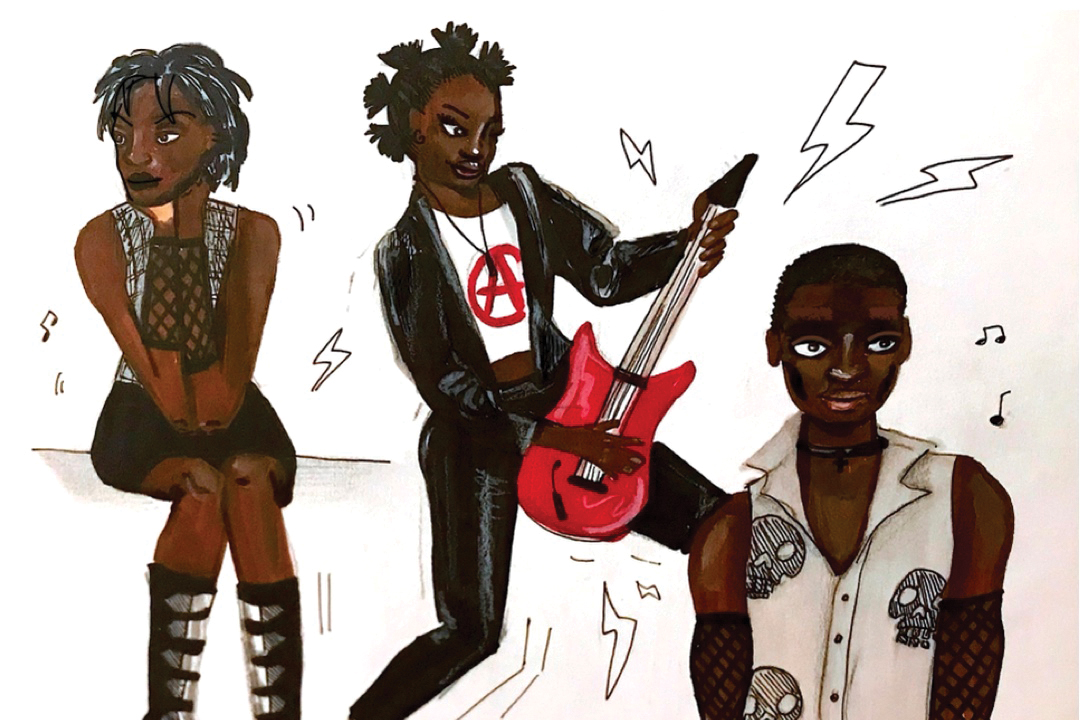Over the years, Africa has been home to its fair share of subculture movements. Whether you’re talking about the Heavy Metal Cowboys of Botswana, the psychedelic tunes of 1970s Zambian rock, or the log drums of South African amapiano, the continent has been home to diverse and thriving local underground music scenes.
However, what makes Angola’s goth scene stand out is its inspiration. Instead of being influenced by local musicians like the movements above, ‘gothic’ music acts were inspired by international artists, such as the 1980s European post-punk bands Alien Sex Fiend, Sisters of Mercy, and The Cure.
However, the origins of Angola’s darkwave scene remain unknown. Singer Adilson Lusitano stressed that while there may have been goths in Angola in earlier decades, they were more reserved. It was only after 2000 that people started feeling comfortable enough to organize meet ups.
However, Angola’s gothic scene soon continued to grow thanks to the rise of the internet. Streaming and online music-sharing tools helped Angolans discover more bands outside of the well-known ones from the 1980s post-punk scene. Additionally, social media platforms, such as Facebook, let listeners discuss and share interests without facing judgment in their group of friends.
In Angola, the most popular music genres are semba, kuduro, kizomba, and rap. Any music that falls outside of these categories is often considered ‘alternative,’ and is therefore looked down on.
However, the stigma surrounding gothic subculture is different. Even in places where identifying as goth is considered more mainstream — such as in the United Kingdom — there are negative stereotypes associated with its music and aesthetic. Whether they’re seemingly harmless ones — such as consistently dressing in black and having a gloomy personality — or more stigmatized ones, such as being associated with the occult — being perceived as goth has been a source of ostracization for many people worldwide.
This norm is no different in Angola. While I haven’t found any reports of physical violence against people for being perceived as goth, it’s evident that they still face prejudice. For instance, gossiping and insults are a common reaction to goths because they are associated with witchcraft and other occult practices in Angola — even though the majority do not believe in it.
In November 2016, there was a major positive shift. The Media Library of Luanda invited members of the goth scene to discuss its subcultures from their perspective. The discussion was called “All you need to know about goth culture, myths, and truths.”
The event’s organizers invited Marcelino Kambuale, Franklin Lopes, and Kenned de Almeida, all of whom are active figures in Angola’s gothic scene, to answer questions. Kenned’s appearance is arguably most notable, since they’re a photographer, and they’re responsible for a large number of the pictures of Angolan goths that can be found online.
The event also clarified various misconceptions. The guests clarified that anyone could be goth — in their view, identifying as goth was not about the music one listened to or how one dressed, but rather one’s introspective nature. They were drawn to dressing in black because it represented the beauty of mystery. They viewed cemeteries as calming places because they gave people an opportunity to reflect and process their thoughts. While the guests reaffirmed the fact that there was no specific philosophy attached to being goth, they suggested that if there were one, it would be about respect.
In some cases, we can see this respect practiced in the way that online Angolan goth spaces have grown. In person, monthly goth meet ups mostly take place in Viana and Cacuaco; online, followers of Angola’s goth scene are able to communicate from anywhere.
One of the largest Angolan gothic spaces is the Facebook page Subcultura Gotica Em Angola, where information about most of the community’s events are posted. It is also where people in the Portuguese-speaking sphere educate each other about the history of post-punk music, compliment each other’s outfits, and encourage each other’s creativity.
Whether they connect through in-person events or online communities, the do-it-yourself nature of goth subcultures has made them powerful spaces for nurturing creativity. Goth folk in Angola use these resources to share information with one another, discuss new bands, and talk to new people. These small actions don’t only show support — they also reassure other community members that there is nothing wrong with being goth, regardless of where you’re from.


